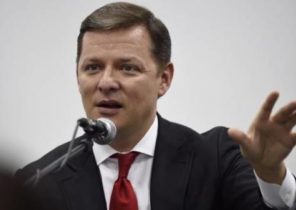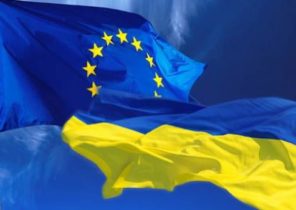
2016 was one of the most unusual in modern history, not only for politicians but also for investors.
In the first weeks of the year, stock markets have adjusted their performance on a global scale by 10%, sharply increased market fluctuations, and oil (Brent) dropped to $ 26 per barrel. It’s been ten months, and the S&P 500 and Euro Stoxx 600 rose with the minimum rates of 23% and 17% respectively, the MSCI Emerging Markets index from mid-January added more than 20%, the implied market volatility, measured as the “fear index” VIX, is down 50 percent compared to the first quarter, when it was at its peak, the price of Brent crude increased by two times, industrial metals have added an average of 35%.
But not surprising that not all markets have recovered and returned to normal, although that is what they usually do at some point, but the fact that such recovery occurs in the background of major political upheaval, weak global growth and the apparent movement of the U.S. Central Bank towards tightening of monetary policy. The last circumstance was confirmed on 14 December, when the Federal funds interest rate, as expected, was increased by 0.25%, and the instructions of the Central Bank say that the us in 2017 waiting for the new promotion.
Stock markets in European countries with economies in transition generally followed global trends, and the MSCI index for the region for the year from 14 December rose by 16%. However, Russia, Turkey and Poland (the largest markets in the region — in that order) behave differently, especially if to evaluate their performance in a common currency.
In 2016, Russia was moving forward, while Poland and Turkey trailed behind.
This year the three leading European countries in transition, the Russian market demonstrated the best performance. The MICEX index, which is a key on the Moscow stock exchange by mid-December jumped by 26%. Russian stocks benefited from the rise in oil prices, a gradual improvement in the economy after two years of decline, and in recent years, and from forecasts about what the election trump President may lead to the withdrawal of the American and European sanctions against Russia.
Such luck was not accompanied by Poland and Turkey. Stock indexes in both countries have grown quite a bit (eight percent as of mid-December), when compared with Russia and emerging markets in General. One of the reasons is that neither Poland nor Turkey, unlike Russia, did not benefit from higher prices for oil and other raw materials in the current year. But more importantly. In both countries a risk factor for investors was the domestic policy in the first place it concerns the owners of the shares.
In Poland, the political leadership adopted the strategy of “economic patriotism,” and it is in terms of increasing regulatory and tax risks. In Turkey great damage to the economy caused an attempted coup against the government of the party of justice and development, a cooling of relations between Ankara and Brussels, as well as geopolitical risks raise a risk premium. In this regard, no wonder if to take into account the situation in the monetary sphere, the lag of stock of Poland and Turkey from Russia in 2016 will increase even more. If you count in euros, the main Russian stock market index has risen by more than 50 percent, Polish WIG 30 gained only 4.7% and the Turkish BIST 30 dropped to eight percent.
In 2017 the situation will be more favorable for growth, but interest rate risk will rise, and political uncertainty will increase.
In recent months the international situation has changed, with implications both for securities and for European countries with economies in transition.
The threat of deflation (the fear of falling prices and economic stagnation), which is firmly lodged in the minds of policymakers and investors in 2015 and in early 2016, gradually weakened. She was replaced by a hope for “relazione auction”, based on the expectation that stock markets will be supported by policies aimed at stimulating economic growth and this will fuel inflation. Such changes began in the summer, but once elected they trump has received a powerful impetus. Somewhat unexpectedly, the market believed in the advantages of expansionary fiscal plans of the next President, but ignored the long-term negative effects from its protectionist plans.
The new global situation characterized by the hope for accelerated growth worldwide, the possible increase in inflation, increase in interest rates in the U.S. and a strong U.S. dollar. Most analysts also believe that the emerging markets collectively demonstrate stability in the face of rising U.S. rates, while some economies will suffer more than others.
Who will win?
In the big three European stock markets in Russia, most likely, will be the clear winner in the new environment. It benefits from the increase in commodity prices that is accompanied by rapid world growth; it is quite resistant to higher American interest rates due to the small external debt, both public and corporate; and it will certainly benefit from the fact that the President-elect intends to take a less confrontational stance towards Moscow.
The weakening and even the complete abolition of Western sanctions today becomes a very real possibility, especially due to the fact that the European front against Russia, too, collapses. However, the abolition of the Western sanctions will not change the situation in Russia radically. These sanctions have little impact on the country’s potential and its actual growth, and their abolition will occur gradually over a long period of time, causing tense diplomatic bargaining at the interim measures. Implications for Russian equities and the ruble are likely to be minor, and in such a situation there will be more opportunities for trade and investment the picture is hardly affected.
Great help Russian shares in 2017 will have ongoing economic growth, driven primarily by the rise in oil prices. After two years of recession Russian GDP in 2017 is expected to grow more than one percent, and perhaps closer to two percent. There is the potential to reduce inflation and interest rates, and consumer spending in the second quarter can go from minus to plus. Despite the good performance in 2015 and 2016, the stock is still on average not very expensive, and the ratio of their market value to net profit is around 7x.
Turkey: international constraints, domestic problems
Unlike Russia, international events for Turkey’s currently poor, and this situation will continue for the foreseeable future. 2016 was not the best for investors in Turkey, and 2017 will probably be difficult. The increase in interest rates in the U.S., the strengthening U.S. dollar, rising oil prices — all this is a huge loss for the Turkish economy because it has a large external debt (debt of corporations), and it is a net importer of oil and raw materials. In addition, the main problems in 2016, such as terrorism in the country, the consequences of geopolitical conflicts in the neighborhood, domestic political uncertainty and tensions with the EU, will continue in 2017.
These adverse trends are already reflected in the deterioration in monetary indicators and macroeconomic data. The Turkish Lira was one of the weakest currencies this year, and the pressure will continue, particularly as a result of increasing rates in the United States. The third quarter economic growth will turn into decline. There is speculation that in the fourth quarter he will return to the plus, however, today’s General growth forecast to 2017 3.1% seems overly optimistic.
Turkish equities are cheap because the price/profit from them below 8x, but currently find incentives for growth very difficult.
Poland is losing its luster
Poland is still a solid macroeconomic fundamentals. The expected growth rate for 2016 and 2017 be 2.8 and 3.2%, respectively (Bloomberg), and the Polish economy are still ahead of the Eurozone to grow by 1-2 percentage points. The current account deficit is small, there is no inflation and the budget deficit, which in 2017 will amount to an insignificant three percent, not alarming.
But despite the picture in macroeconomics, love the equity investors to Poland over the past 15 months substantially weakened. The new government takes the market of many negative signals. Talk about “repolarization” the financial sector and (following the example of Viktor Orban in Hungary) about the “economic patriotism” as the guiding principle of economic policy scare, and this was the main reason for the weak performance of the Polish indexes compared to the MSCI Emerging Markets Europe (difference 20%) after you change the alignment of political forces in the elections of 2015.
The uncertainty is still large, and it will surely negatively impact on the performance of 2017. In the list of unsolved problems the issue of the loan in Swiss francs and how it will affect the banking system; and tax reform, which may require an increase in taxes on high incomes, for the government to realize social benefits.
However, you should look at the example of Hungary, which clearly shows what is trying to achieve a new government. The Hungarian stock market (admittedly, this is a very asymmetric segment of the economy as a whole) showed weak results in the first three years of the program “economic patriotism”, Prime Minister Orban. But since the beginning of 2015, it is significantly ahead of other markets — even if judged in terms of hard currency.
Therefore, the example of Hungary indicates that the Polish stock too, should not lose hope, especially when they eliminated the main causes of uncertainty. But we should not deceive ourselves — before the improvement it can get worse.







